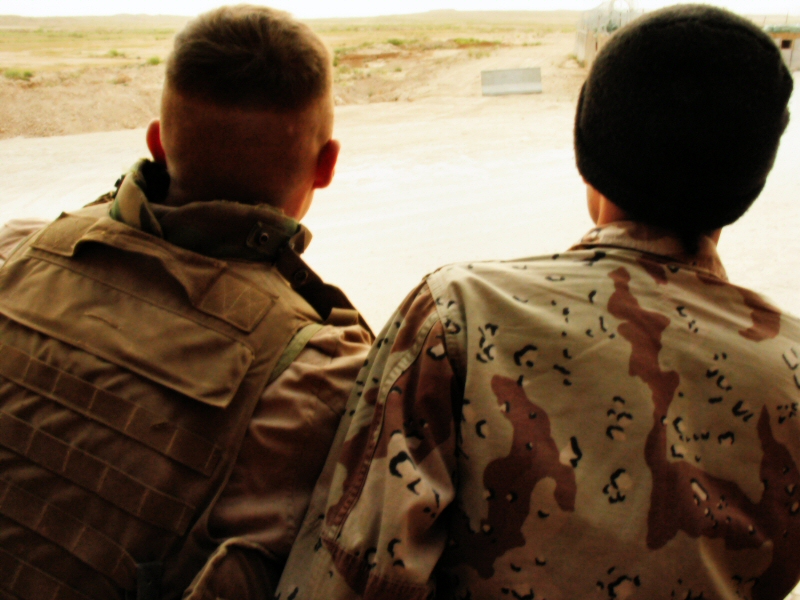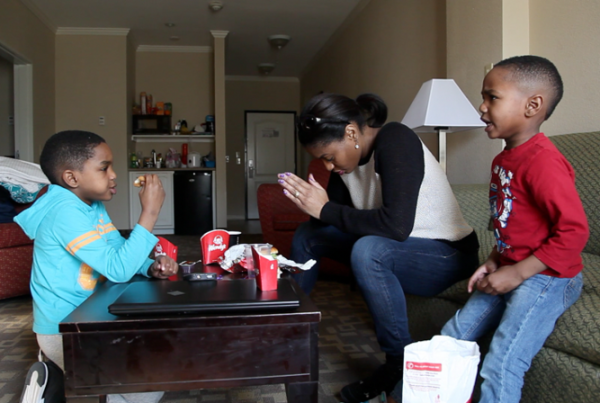The body of a Marine who died last week has finally returned home. Louis Cardin was killed after his unit was hit by an ISIS rocket attack in Iraq. Now the Pentagon says they want to place even more combat troops into Iraq – reiterating Defense Secretary Ash Carter’s intention to “put boots on the ground.”
But weren’t we out of Iraq already? It seems the opposite may be occurring.
Sagar Meghani, the Pentagon reporter for the Associated Press, says the Marine who died was the first time that reporters and others in Iraq became aware of the “fire base” that the U.S. has set up close to an Iraqi base where U.S. advisors are working with Iraqi forces.
“It was that base which was attacked,” he says, “and it was that base in which you had that Marine casualty…. What the design of that base is to be is to protect these U.S. advisors and those Iraqi forces. We have been told for days that it was purely a defensive outpost. They were there to provide force protection.”
Meghani says reporters came to find out that the base had been involved in artillery support and firing illumination rounds so the Iraqi forces could better target ISIL fighters.
“That leads you to believe that there’s nothing defensive about this operation,” he says. “That’s purely an offensive operation. You get the sense that they might not necessarily be on the front lines, but this is not World War II trench warfare. You don’t need to be on the front lines of a battle like that.”
U.S. Rep. Mac Thornberry, from Texas, has said the troop levels have been hidden from the public, a debate that Meghani says is “a fight, essentially, between the Pentagon press corps and management of the Pentagon.” A statute caps the number of U.S. troops at 3,800 soldiers.
“But there’s no question – and Pentagon troops will tell you – that at any given time, there are more troops there,” he says. “Some unofficial estimates have gone as high as 4,500 or 5,000.”
Meghani says as troops cycle in and out, there’s bound to be overlap with some soldiers temporarily assigned to a duty, perhaps not intended to be there for nine months.
“It gets back to those semantics of the definition of what are boots on the ground?” he says. “There is a war going on – some of these folks are receiving combat pay (and) they are armed.”
From that perspective, that may look like there are more “boots on the ground” than should be allowed, but Meghani says most of the soldiers stationed there aren’t carrying out technical operations on the front lines.
“It gets very murky, especially for an administration that’s very defensive about having come in with President Obama in 2009 vowing to end both the Iraq and Afghanistan wars,” he says. “But clearly, you still have Americans – albeit at a far lower rate – dying in both of those countries.”
Meghani says Pentagon reporters were “caught off guard” on Friday when Defense Secretary Ash Carter and General Joe Dunford, chairman of the Joint Chiefs of Staff, said there will be more forces in Iraq in the coming weeks.
“We have no idea of numbers, we have no idea on what role those troops might play,” he says. “The Pentagon has been talking for weeks about accelerating this fight.”
Listen to the full interview in the audio player above.















